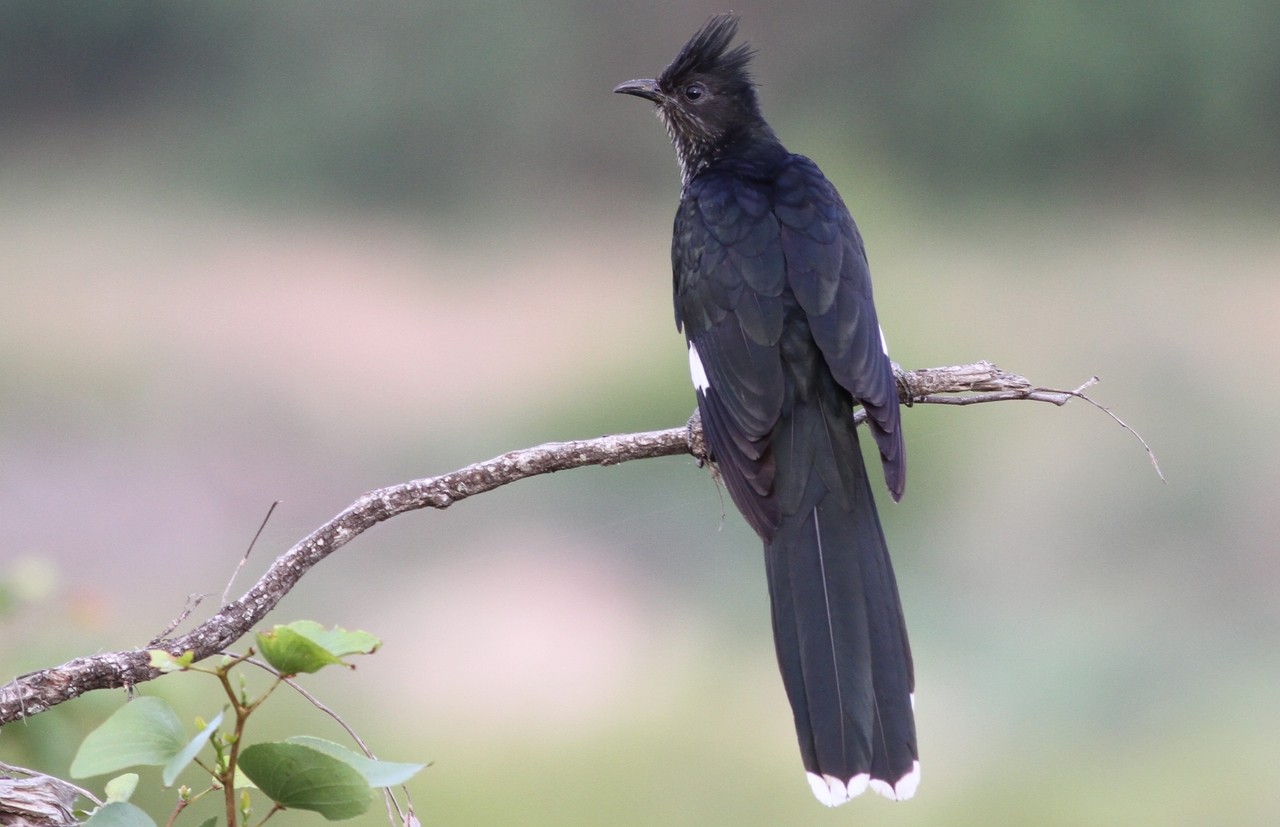Levaillant's Cuckoo
A species of Old world crested cuckoos Scientific name : Clamator levaillantii Genus : Old world crested cuckoos
Levaillant's Cuckoo, A species of Old world crested cuckoos
Botanical name: Clamator levaillantii
Genus: Old world crested cuckoos
Content
Description General Info
Description
The cuckoo is 37.5 cm (15 in) long, longer tailed than pied cuckoo, and with a more heavily streaked throat. There are two colour morphs. The light morph is black above, faintly glossed bluish or greenish. The throat streaking may extend on to the sides. The primaries and rectrix tips are white. The dark morph is black except for the white primary patch and white spots on the outer tail feathers (these are absent in dark pied cuckoo. The juvenile Levaillant's cuckoo is brown above, rufous on the wing-coverts and rectrix tips, with a buff forehead, face and underparts, and the throat more streaked. The call is a low ringing kuwu-weer, kuwu-weer... and an excited ku-wi-wi-wi. 
Size
39 cm
Nest Placement
Tree
Feeding Habits
Levaillant's Cuckoo's diet primarily includes insects like caterpillars, termites, ants, beetle larvae, and grasshoppers. Occasional intake of berries and tree shoots has been observed. They forage mostly in trees and bushes, with some ground hopping.
Habitat
Levaillant's Cuckoo inhabits a range of woodland environments, including open woodland areas, wooded Acacia savanna, and riverine forests. It is also found in man-modified landscapes such as thickets, gardens, and old farmlands. This species typically prefers humid habitats and is commonly associated with regions that receive substantial rainfall, notably in areas characterized by a lush forest canopy.
Dite type
Omnivorous
General Info
Feeding Habits
Bird food type
Behavior
Levaillant's cuckoo is a brood parasite and the female lays her eggs in the nest of another species of bird, typically the southern pied babbler (Turdoides bicolor), the bare-cheeked babbler (Turdoides gymnogenys), the Hartlaub's babbler (Turdoides hartlaubii) or the arrow-marked babbler (Turdoides jardineii). Both the male and female cuckoo fly around acrobatically to distract the host birds. The male continues the distraction while the female lays the egg. Unlike many other species of cuckoo, the newly-hatched cuckoo chick does not push the other eggs and nestlings out of the nest. It leaves the nest after about ten days and becomes independent in four to six weeks. 
Species Status
Not globally threatened.
